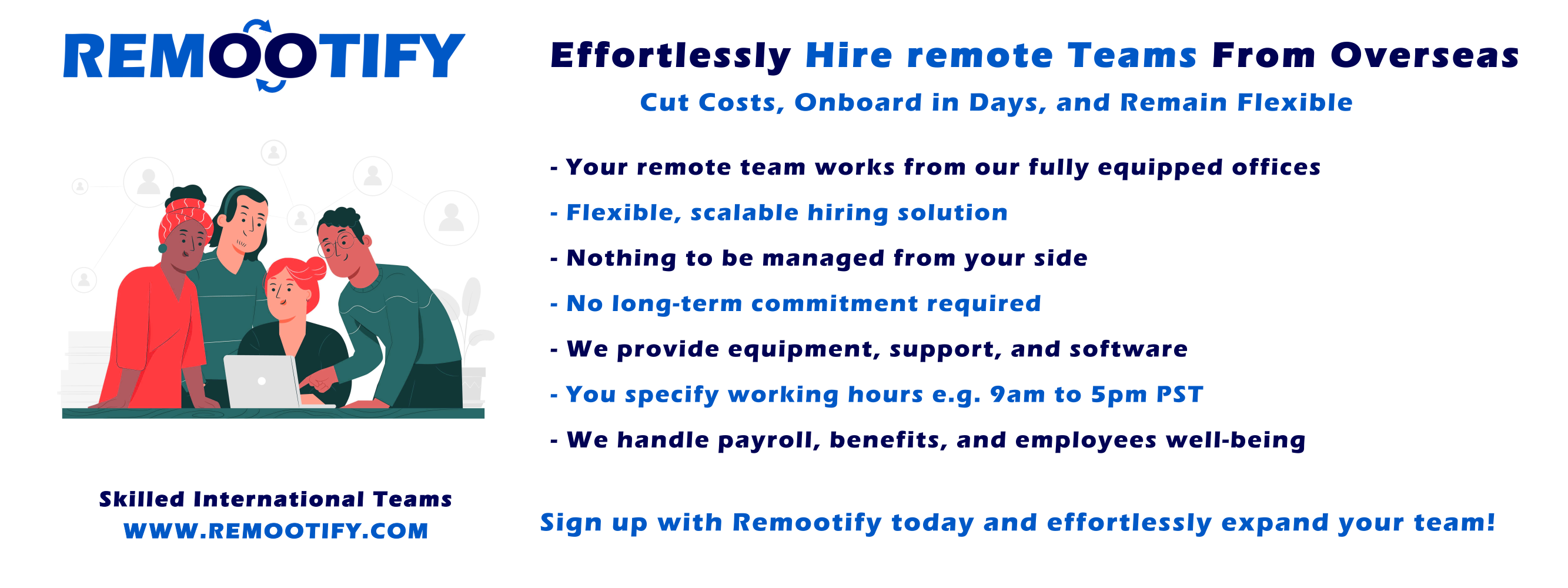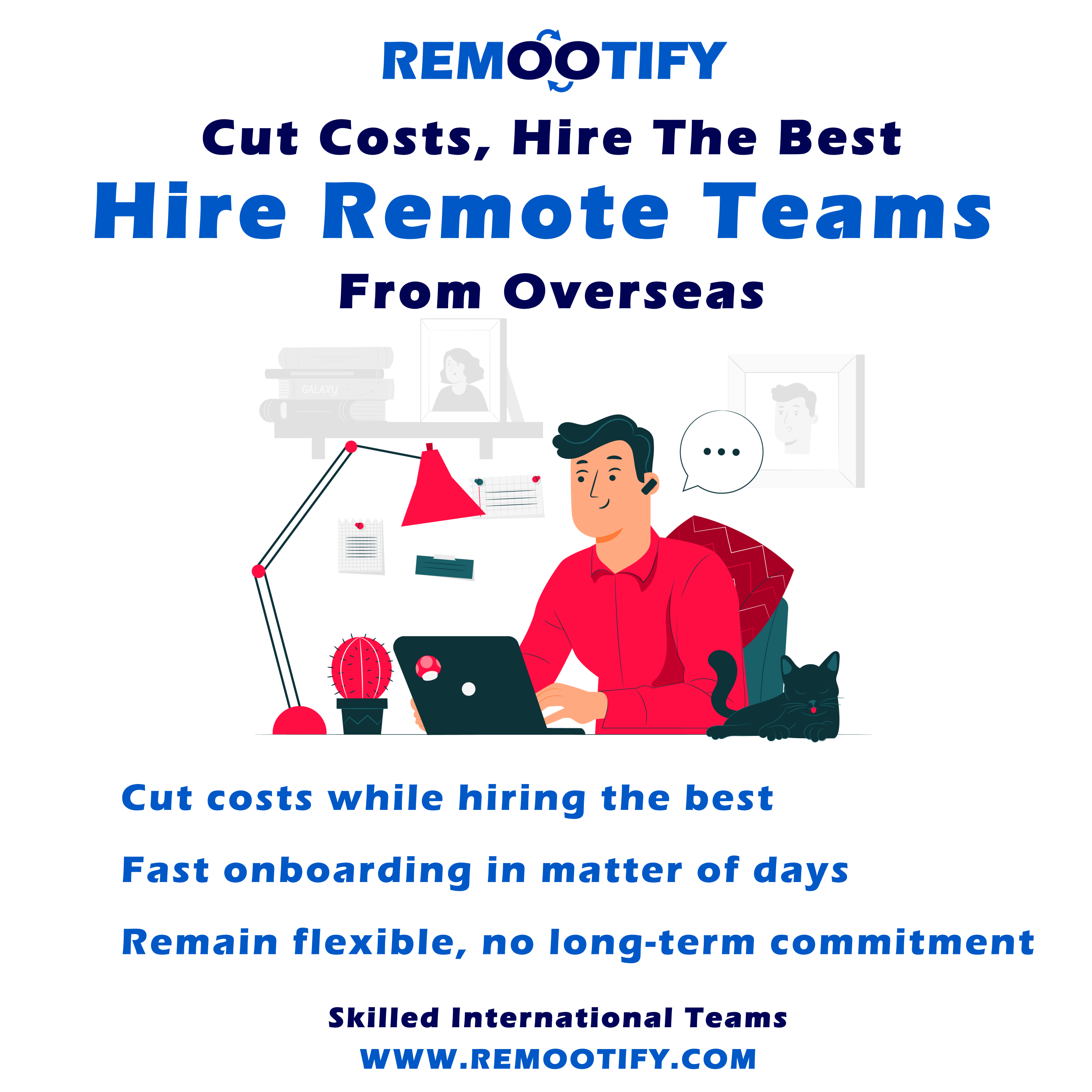Start hiring YOUR REMOTE TEAM, Today!
Enter your information below to start a discussion with one of our team members!

Ever wondered about the secret behind multi-national organizations’ seamless operation across global borders? It all boils down to a concept known as Global Mobility. This process enables companies to transfer employees from one country to another, expanding their reach on a global scale.
In this blog post, we will demystify what Global Mobility is and uncover why it’s crucial for your organization’s growth and diversification strategy. So let’s embark on this journey of discovery together!
Key Takeaways
- Global mobility refers to the movement of employees across international borders to work in different countries.
- It is important for organizations because it allows them to recruit talented individuals from around the world, fostering diversity and innovation within their workforce.
- Global mobility programs also help organizations expand internationally, adapt to different markets, and gain valuable market insights.
Understanding Global Mobility
Global Mobility refers to the movement of employees across international borders for work purposes, and it plays a crucial role in organizations’ strategies for talent management and global expansion.
Definition
Global mobility is about moving staff from one country to another. It helps a company work well across borders. This may include workers going on short trips or moving for a long time.
When an employee moves, they bring their skills and knowledge with them. This helps the company learn more and do better work in different parts of the world. Global mobility also includes services like help getting a visa or learning about new cultures.
Importance in organizations
Global mobility holds significant importance in organizations today. It allows companies to tap into a larger pool of talent, enabling them to recruit individuals with specialized skills and knowledge from different parts of the world.
This not only enhances the organization’s capabilities but also fosters innovation and collaboration by promoting diversity within the workforce. Moreover, global mobility programs enable organizations to expand their business internationally and adapt to different markets and customer needs.
By providing employees with international experience and career development opportunities, organizations can improve employee engagement, retention, and overall success in a globalized world where agility is key.
Benefits of Global Mobility for Organizations
Global mobility provides organizations with benefits such as talent acquisition, talent retention, diversity and inclusion, and market insights.
Talent acquisition
Global mobility plays a significant role in talent acquisition for organizations. It allows companies to expand their pool of potential candidates by recruiting individuals with specialized skills and knowledge from different parts of the world.
With global mobility, organizations can tap into new markets and find talent that may not be available locally. This enables them to bring in fresh perspectives, diverse backgrounds, and unique experiences, enhancing innovation and driving business growth.
Effective global mobility programs attract top talent by offering career development opportunities and international experience, making organizations more attractive to potential employees.
Talent retention
Organizations that prioritize global mobility are more likely to retain their talented employees. When employees have the opportunity to work in different countries and experience new cultures, it enhances their professional development and personal growth.
Additionally, being part of a global workforce allows employees to gain valuable skills and perspectives that can make them more valuable assets for the company. With effective global mobility programs in place, organizations can create a supportive environment where employees feel encouraged to stay and contribute their expertise.
Research has shown that international assignments and cross-border mobility significantly increase employee engagement and job satisfaction, ultimately leading to higher retention rates.
Diversity and inclusion
Diversity and inclusion are key components of global mobility programs. By embracing diversity, organizations can benefit from different perspectives, ideas, and experiences brought by employees from diverse backgrounds.
This allows for a more innovative and creative work environment. Inclusion ensures that everyone feels valued and respected regardless of their background or characteristics. It promotes equal opportunities for career growth and development, leading to higher employee satisfaction and retention rates.
Including diversity in global mobility programs also enables organizations to better understand the cultural nuances of different markets. It helps build relationships with clients, customers, and partners from various countries by demonstrating respect for their culture and values.
Additionally, having a diverse workforce enhances an organization’s ability to cater to an increasingly diverse customer base around the world.
Market insights
Global Mobility provides organizations with valuable market insights that can help them make informed business decisions. By having employees work in different countries, organizations gain firsthand knowledge of local markets, customer preferences, and industry trends.
This allows them to adapt their products or services to meet the specific needs and demands of each market. Additionally, global mobility programs facilitate networking opportunities with local businesses and professionals, providing organizations with a deeper understanding of the competitive landscape in different regions.
With these market insights, organizations can develop effective strategies for expansion and growth in international markets.
Challenges of Global Mobility
Navigating immigration issues, tax and compliance, and relocation logistics can be daunting for organizations engaging in global mobility. Discover how to overcome these challenges to ensure a successful international workforce.
Immigration issues
Immigration issues can pose challenges for organizations involved in global mobility. When employees are transferred to another country, they may need to obtain work permits or visas to legally work there.
This process can be complex and time-consuming, requiring organizations to navigate through immigration laws and regulations. Additionally, different countries have varying immigration requirements and timelines, which can further complicate the process.
It is crucial for organizations to provide support and assistance to employees in navigating these immigration issues effectively, ensuring compliance with local laws while minimizing disruptions to business operations and employee well-being.
Tax and compliance
Global mobility often comes with complex tax and compliance requirements that organizations must navigate. When employees are relocated internationally, they may be subject to different tax laws and regulations in their new country of work.
This can create challenges for both the employee and the organization in terms of understanding and complying with these tax obligations. Moreover, ensuring compliance with immigration laws is also crucial to avoid any legal issues or penalties.
Organizations need to stay updated on the tax regulations and compliance requirements in each country where they operate to ensure smooth operations and avoid any potential liabilities.
Relocation logistics
Relocation logistics is a crucial aspect of global mobility programs. It involves the careful planning and coordination of all the necessary steps to relocate employees from one country to another.
This includes organizing transportation, arranging housing accommodations, managing visas and work permits, and providing support during the transition period. Efficient relocation logistics ensure that employees can smoothly settle into their new locations, minimizing disruptions to their work and personal lives.
By taking care of these logistical details, organizations can help their employees feel supported and valued, enhancing their overall experience with international assignments.
Building an Efficient Global Mobility Program
Identify goals and objectives, assemble a team, prioritize employee well-being, and consider support structures.
Identifying goals and objectives
To build an efficient global mobility program, it is important for organizations to identify clear goals and objectives. This involves determining what they want to achieve through their international assignments and employee transfers.
For example, the goals may include increasing market insights, fostering diversity and inclusion, or acquiring talent with specialized skills from different parts of the world. By having well-defined goals and objectives, organizations can align their global mobility programs with their overall business strategy and ensure that they are effectively supporting their international operations.
Assembling a team
To build an efficient global mobility program, assembling the right team is crucial. This team should consist of individuals with diverse skills and expertise to handle various aspects of international assignments.
For example, HR professionals can oversee policy development and employee support, while legal experts can navigate immigration issues and ensure compliance with local laws. Additionally, finance professionals can manage budgeting and tax considerations related to global mobility.
By bringing together a multidisciplinary team, organizations can ensure that all aspects of their global mobility program are addressed effectively.
An effective global mobility team should also include representatives from different departments and regions within the organization. This diversity allows for a comprehensive understanding of the company’s needs and challenges in different locations.
Moreover, including employees who have previously experienced international assignments can provide valuable insights into the realities and demands of living and working abroad.
Prioritizing employee well-being
One important aspect of building an efficient global mobility program is prioritizing the well-being of employees. Relocating to a new country can be challenging and stressful, so organizations need to ensure that their employees feel supported and cared for throughout the process.
This can include providing comprehensive support services such as assistance with visa and immigration processes, offering relocation assistance, and even providing cross-cultural training to help employees adjust to their new environment.
By prioritizing employee well-being, organizations can not only improve employee satisfaction and retention but also enhance the success of international assignments by ensuring that employees are able to adapt smoothly to their new work and living environments.
Considering support structures
Organizations need to consider support structures when implementing a global mobility program. These support structures include various services and resources that assist employees during their international assignments.
For example, organizations may provide visa and immigration assistance to ensure employees can legally work in different countries. They may also offer relocation assistance, helping employees with housing, transportation, and settling into a new environment.
In addition, cross-cultural training is crucial in preparing employees for the challenges of working in a different cultural context. Support structures like these are essential for ensuring the success and well-being of employees on international assignments.
Conclusion
Global mobility is the seamless movement of employees across international borders, enabling organizations to tap into new talent pools and expand their business globally. It promotes cultural diversity, knowledge transfer, and collaboration, while also providing career development opportunities for employees.
In today’s globalized world, having an efficient global mobility program is essential for organizations to thrive and adapt to different markets and customer needs.
FAQs
1. What is Global Mobility?
Global mobility means crossborder movement of employees. It includes international transfers, expatriate programs and overseas assignments.
2. Why is global mobility important in an organization?
Global mobility helps in global talent management. This can improve workforce mobility and help companies find the best people for jobs no matter where they live.
3. How does an organization manage employee relocation?
Organizations handle employee relocation using a policy called International Assignments Policy. They also offer immigration services to support this.
4. What areas are covered under Expatriate Management?
Expatriate management covers things like Crosscultural competence, global HR needs, and providing resources for the Global expatriate during their international business travel.
5. Can crosscultural mobility benefit organizations as well as employees?
Yes! Crosscultural mobility can make workers more skilled with different cultures that could be helpful in any future international roles within the company.





